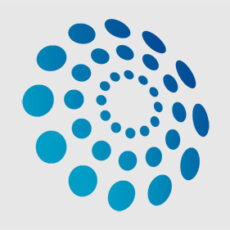Member info

Dr Susanne KOHL
Germany
Team

Pr Katarina Stingl
Germany

M.Sc. Melanie Kempf
Germany
HCP Center

contact
Centre for Ophthalmology, University Eye Hospital, Tübingen, Germany
Clinical trials

PIGMENT – PDE6A gene therapy for retinitis pigmentosa.

CURETINA personalized medicine in hereditary retinal degenerations

NAC Attack, A Phase III, Multicenter, Randomized, Parallel, Double Masked, Placebo-Controlled Study Evaluating the Efficacy and Safety of Oral N-Acetylcysteine in Patients With Retinitis Pigmentosa

A Double-Masked, Randomized, Controlled, Multiple-Dose Study to Evaluate the Efficacy, Safety and Tolerability of Ultevursen in Subjects With Retinitis Pigmentosa (RP) Due to Mutations in Exon 13 of the USH2A Gene (Sirius)

A Double-Masked, Randomized, Controlled, Multiple-Dose Study to Evaluate the Efficacy, Safety and Tolerability of QR-421a in Subjects With Retinitis Pigmentosa (RP) Due to Mutations in Exon 13 of the USH2A Gene With Early to Moderate Vision Loss

An Open-Label, Dose Escalation and Double-Masked, Randomized, Controlled Study to Evaluate the Safety and Tolerability of Sepofarsen in Pediatric Subjects G (p.Cys998X) Mutation.

An Open Label, Multi-centre, Phase I/II Dose Escalation Trial of a Recombinant Adeno-associated Virus Vector (AAV2/8-hCARp.hCNGB3) for Gene Therapy of Adults and Children With Achromatopsia Owing to Defects in CNGB3

A Phase 3, Randomized, International Multicenter Trial of DAY101 Monotherapy Versus Standard of Care Chemotherapy in Patients with Pediatric Low-Grade Glioma Harboring an Activating RAF Alteration Requiring First-Line Systemic Therapy

MyopiaX Treatment for the Reduction of Myopia Progression in Children and Adolescents: Safety and Efficacy Investigation

Transcorneal Electrostimulation for Therapy of Retinitis Pigmentosa.

This is a single-arm open label interventional safety trial with RP patients, who receive weekly TES for 6 months on 1 eye followed by observation for another 6 months without stimulation. The primary outcome measure is safety, indicated by the frequency and severity of adverse events.

Rate of Progression in EYS Related Retinal Degeneration (Pro-EYS).

Safety and Efficacy of Emixustat in Stargardt Disease.

An Open-Label Safety Study of Retinal Gene Therapy for Choroideremia with Bilateral,Sequential Administration of Adeno-Associated Viral Vector (AAV2) Encoding Rab Escort Protein 1 (REP1).

A Randomised, Open Label, Outcomes-Assessor Masked, Prospective, Parallel Controlled Group, Phase 3 Clinical Trial Of Retinal Gene Therapy For Choroideremia Using An Adeno-Associated Viral Vector (AAV2) Encoding Rab Escort Protein 1 (REP1)

Natural History of the Progression of Choroideremia Study NSR-CHM-OS1.

Rate of Progression in USH2A Related Retinal Degeneration

A Long-term Follow-up Study to Evaluate the Safety and efficacy of Retinal Gene Therapy in Subjects with choroideremia treated previously with Adeno-Associated Viral Vector Encoding Rab Escort Protein-1 (AAV2-REP1) in an Antecedent Study.

A Study of the Efficacy and Safety of QLT091001 in Subjects with Inherited Retinal Disease (IRD) Caused by Mutation in Retinal Pigment Epithelium Protein 65 (RPE65) or Lecithin : Retinol Acyltransferase (LRAT).

A Non-interventional Study of Clinical Experience in Patients Prescribed Raxone® for the Treatment of Leber’s Hereditary Optic Neuropathy (LHON).

Tübingen Choroideremia gene therapy trial open label Phase 2 clinical trial using anadeno-associated viral vector (AAV2) encoding Rab-escort protein 1 (REP1)

Natural History Study in Inherited Retinal Disease Subjects Caused by Mutations in RPE65 or LRAT.

The Natural History of the Progression of Atrophy Secondary to Stargardt Disease Type 4: PROM1-Related Macular Dystrophy (ProgStar-4).

A Phase 2b Randomized, Double-masked, Controlled Trial to Establish the Safety and Efficacy of Zimura™ (Complement C5 Inhibitor) Compared to Sham in Subjects With Autosomal Recessive Stargardt Disease

A Phase 3 Multicenter, Randomized, Double Masked, Sham- Controlled Clinical Trial to Assess the Safety and Efficacy of Intravitreal Administration of Zimura (Complement C5 Inhibitor) in Patients With Geographic Atrophy Secondary to Age-Related Macular Degeneration

Evaluation of the effectiveness of transcorneal electrostimulation in patients with retinitis pigmentosa - a multicenter, prospective, randomized, controlled and double-blind study on behalf of the G-BA

Retina Implant Pilot Trial to Evaluate Safety & Efficacy in Blind Patients HavingDegenerated Photo-receptors

Safety and Efficacy of Subretinal Implants for Partial Restoration of Vision in Blind Patients.

Repeated Treatments of QLT091001 in Subjects With Leber Congenital Amaurosis orRetinitis Pigmentosa (Extension of Study RET IRD 01)

Transcorneal Electrical Stimulation - Multicenter Safety Study.

Clinical Characterization on PDE6A-related Retinitis Pigmentosa in Preparationto a Gene Therapy Trial

Study of CNGB1 Retinitis Pigmentosa and Allied Hereditary Disorders

Rate of Progression of PCDH15-Related Retinal Degeneration in Usher

Qualification for Cone-Optogenetics (EyeConic)

Natural history of the progression of X-linked retinitis pigmentosa.

Retrospective Non-Interventional Study to Evaluate the Patient Benefit of Transcorneal Electrostimulation (TES)

European Disease Registry on Retinopathy of Prematurity (ROP)

Early Reperfusion Therapy With Intravenous Alteplase for Recovery of VISION in Acute Central Retinal Artery Occlusion

A Phase III, Multicentre, International Study With a Parallel, Randomised, Double-blind, Placebo-controlled, 2 Arm Design to Assess the Efficacy and Safety of Selumetinib in Adult Participants With NF1 Who Have Symptomatic, Inoperable Plexiform Neurofibromas (KOMET)
Scientific publications
Mutation spectrum and clinical investigation of achromatopsia patients with mutations in the GNAT2 gene
Achromatopsia (ACHM) is a hereditary cone photoreceptor disorder characterized by the inability to discriminate colors, nystagmus, photophobia,...
Where are the missing gene defects in inherited retinal disorders? Intronic and synonymous variants contribute at least to 4% of CACNA1F‐mediated inherited retinal disorders
A comprehensive study applying direct Sanger sequencing of the gene‐coding regions, exome and genome sequencing applied to a large cohort of...
The need for widely available genomic testing in rare eye diseases: an ERN‑EYE position statement
ERN-EYE promotes access to genetic testing in RED and emphasizes the clinical need and relevance of genetic testing in...
Comprehensive variant spectrum of the CNGA3 gene in patients affected by achromatopsia
We provide extensive in silico analyses and summarize reported functional data of previously analyzed missense, nonsense and splicing variants to...
Evaluation of Local Rod and Cone Function in Stargardt Disease
The functional analysis of the macular region in STGD1 disease indicates reduced central cone function, corresponding to photoreceptor...
Novel OPN1LW/OPN1MW Exon 3 Haplotype-Associated Splicing Defect in Patients with X-Linked Cone Dysfunction
Patients carrying the novel L-I-V-V-A haplotype presented with a mild form of Blue Cone Monochromacy or Bornholm Eye Disease-like phenotype with...
The landscape of submicroscopic structural variants at the OPN1LW/OPN1MW gene cluster on Xq28 underlying blue cone monochromacy
Using parsimonious assumptions, we reconstructed the composition and copy number of the OPN1LW/ OPN1MW gene cluster prior to the mutation event...
Genetic and Clinical Characterization of Danish Achromatopsia Patients
Although a clear genotype-phenotype correlation can still not be concluded, there may be differences in phenotypical characteristics with variants...
KCNV2-associated retinopathy: genotype-phenotype correlations – KCNV2 study group report 3
Patients with missense alterations had better BCVA and greater structural integrity. This is important for patient prognostication and...
Homozygous stop mutation in AHR causes autosomal recessive foveal hypoplasia and infantile nystagmus
Herein we present a consanguineous family with three children affected by foveal hypoplasia with infantile nystagmus, following an autosomal...



